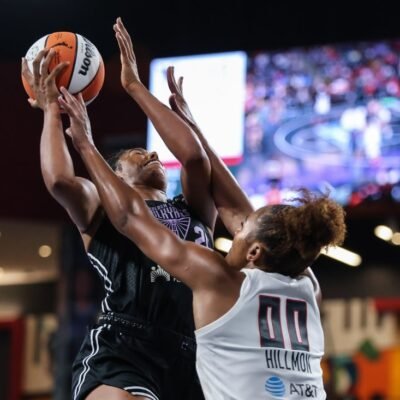
How Learner Characteristics Can Shape Your Instructional Design Strategies
You can’t be an Instructional Designer without paying attention to who your learners are. Learner characteristics are those unique traits that every individual brings when it comes to learning. We’re talking about things like their prior knowledge, learning preferences, cognitive abilities, motivation levels, and even personal experiences. Basically, it’s everything that shapes how they learn and how they engage with the content you’re delivering. The truth is that not everyone learns the same way. Each learner has their own preferences and strengths, and understanding these can affect the success of your lesson designs. If you’re not considering learner characteristics, you’re creating a generic lesson plan that rarely fits anyone.
When you know who your learners are and what they need, you can design content that speaks directly to them. Maybe they’re new to the subject matter and need a step-by-step guide. Or perhaps they’re experts, and you will bore them if you spend too much time on the basics. Knowing these details helps you create learning materials that resonate and keep them engaged. Learner characteristics also affect the pacing and structure of lessons. For instance, if your group of learners has limited attention spans, you may want to turn to microlearning, incorporate frequent breaks, or add interactive elements to keep them engaged. On the other hand, if you know your audience can handle longer lessons, then maybe you’ll dive deeper into the content. Let’s explore different learner characteristics that affect Instructional Design and begin your journey to becoming a pro Instructional Designer.
Cognitive Styles
Leveling/Sharpening
A cognitive style is the way people view and understand the world around them and the thinking patterns they use to learn about it. We will now focus on leveling and sharpening, which are two ways people process and recall information. People who focus on the important details when given much information at once are called levelers. They can recall only the main idea and often miss smaller details that could be equally important. So, when designing lessons for them, make sure the material is straightforward and organized. For complex topics, it’s vital that you create summaries or break down content.
Sharpeners, on the other hand, are the people who will remember everything, like dates, colors, smells, comments, and sounds. Sharpeners are all about precision and detail, but sometimes they get lost, making it harder for them to see the bigger picture. For them, provide more in-depth explanations in the lesson and offer plenty of opportunities for critical thinking.
Field-Dependence/Field-Independence
These two cognitive styles describe how some people are influenced by their environment while others are not. A field-dependent person is easily distracted. They look around, listen to external sounds like conversations, and notice things around the room. Their perception is heavily influenced by what is happening in their surroundings. These people are also socially smart. So, it’s best if the classes they attend are filled with group activities, visual aids, and real-life examples.
Field-independent people are great at focusing on a task despite what’s going on around them. They’re all about structure and approach problems logically and analytically. For them, it’s best if they have the freedom to explore content on their own by being given tasks to enhance their problem-solving skills.
Reflectivity/Impulsivity
Reflective learners are all about thinking. They take their time with a problem or topic, reviewing all possible angles before they commit. They don’t rush into things, which is good for keeping control but not so good when there are deadlines involved. To accommodate them, create lessons that include case studies, open-ended questions, and scenarios—anything that requires deep thinking.
Now, let’s move on to impulsive learners. These people are quick, decisive, and ready to act, sometimes without a second thought. If there’s a challenge, they embark on it instantly. Their readiness is great in fast-paced environments, but it can also lead to mistakes. The ideal course for them would include quizzes, timed challenges, hands-on experiences, and any quick task. Immediate feedback is crucial, though, as it prevents them from making errors.
Learning Preferences
Visual Learning
Visual learners thrive on diagrams, graphs, infographics, videos, and all the visuals that break down complex ideas into digestible pieces. It’s just the way they absorb knowledge faster: through seeing. The brain processes visual information way faster than text. That’s why visual learners have the power to connect ideas when they see relationships mapped out in a diagram or infographic. So, if you’re designing a lesson for these people, don’t even think about adding too much text. Instead, fill it with images, diagrams, videos, and animations.
Auditory Learning
Auditory learners can process information better through sound. They prefer lectures, discussions, and even talking out loud to themselves to understand new ideas. For example, if a heavy textbook is a must-have for the curriculum, it’s better to turn it into an audiobook than hand it out to them, as they’ll lose interest and forget much of it. These learners are all about verbal reinforcement, too. Classroom discussions, group work, or debates are what they thrive in. Think about it: if they can hear it, they can learn it. If you want to add videos, ensure they’re narrated; if you must include an important lecture, it needs to be clear; a classroom discussion should be lively; and if you give them instructions, make them verbal.
Reading-Writing Learning Preference
People with a reading/writing learning preference are all about the written word. They process information best when it’s in text form, perform best when reading textbooks, articles, or even blogs, and retain info when taking notes. So, what does this mean for an Instructional Designer? First of all, videos and slideshows won’t be effective. What they want is clear, concise text. They love structured outlines, lists, and a well-organized flow of information. Don’t forget to give them chances to write, too. Whether it’s an essay, questions, or journaling, these learners enjoy writing and remember things when they see them in their own handwriting.
Kinesthetic Learning
Kinesthetic learners need to be physically doing something. They process information best by moving, touching, and handling things. They’re not totally gaining knowledge if they can’t interact with the topic. It’s not about not paying attention; they actually need to move to focus. Thus, it’s best to give them an activity, a role play, or something they can physically manipulate, like an experiment to keep them engaged. Kinesthetic learners learn better in workshops, laboratories, or VR environments where they can somewhat interact with the subject matter. Therefore, if you’re designing a course for these learners, make it interactive. Add role-playing, simulations, and real-world practice, and forget about lectures, textbooks, or lengthy videos.
The Role Of Prior Knowledge In Instructional Design
Prior knowledge is one of the most crucial learner characteristics. When it comes to learning, what students already know shapes how they take in new information. This is because having a strong foundation means learners can easily attach new information to what they already know. For example, complex sentences are easier when learning a new language if you already know the alphabet and basic grammar. That’s where Instructional Design can help.
Assessing learners’ readiness and prior knowledge is important to figure out if they’re ready to progress in their learning path. It’s only logical that if learners haven’t mastered the basics, they’re going to struggle. Plus, not everyone is on the same page. Some find it easier to move through lessons, while others find it difficult to navigate the learning platform. But how do you figure out who’s ready for the next step? Through assessments. Pre-tests, quick quizzes, or even a well-placed discussion can give you the info you need. So, before you begin delivering learners new material, make sure they can keep up. Check where they’re at, build on what they know, and save everyone the frustration.
Conclusion
Understanding learner characteristics is the most important part of creating effective courses. Every learner is unique, with different backgrounds, prior knowledge, and ways of engaging with new content. By recognizing these, you can tailor your designs to better meet learners’ needs, ensuring that what you craft is engaging, accessible, and actually impacts them. When you take the time to assess your audience’s cognitive styles, learning experiences, and preferences, you prepare them to learn in a more meaningful way and help them retain information for a long time. So, as you design your next course, apply these tips and consider who your learners are and how they learn best to truly make a difference.





